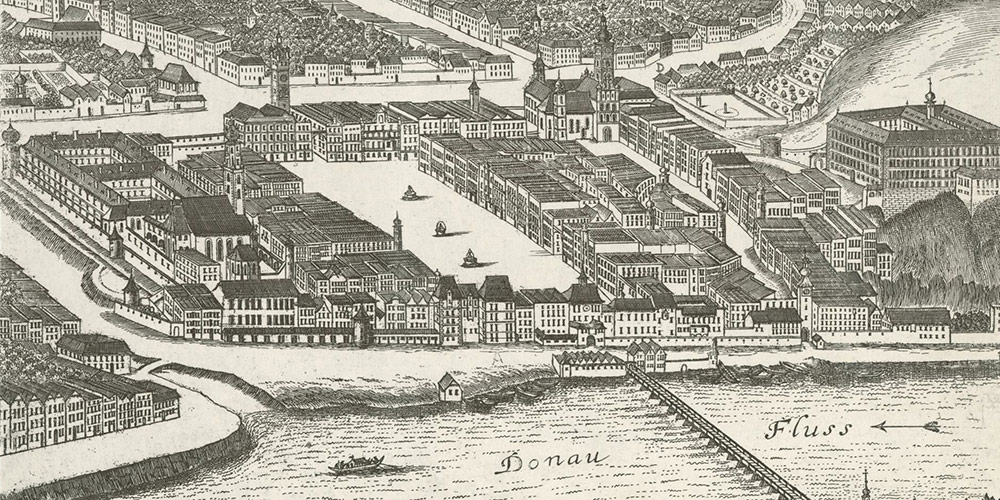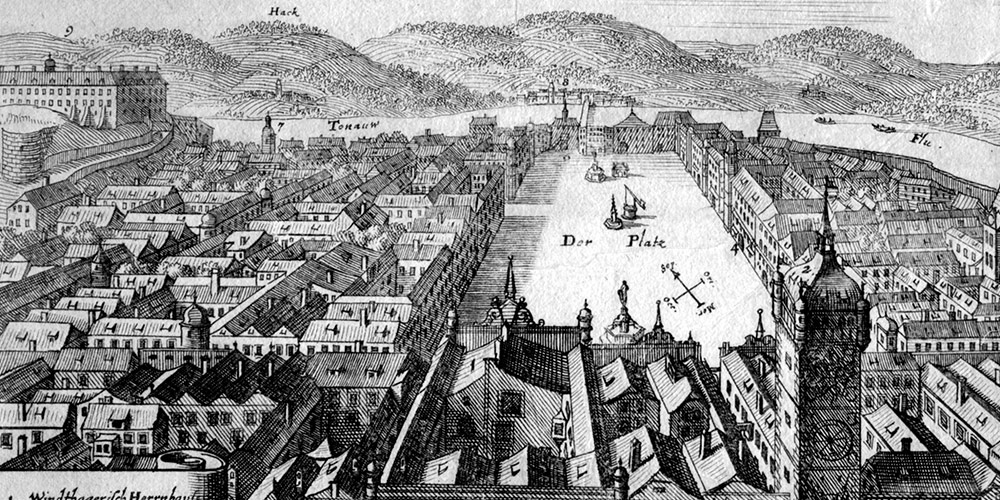If you want to present someone the city of Linz with a single picture, which would you choose? Mag.a Dr.in Cornelia Daurer from the Archive of the City of Linz knows many views of the town, as they have emerged in the last few centuries. Whether painted or photographed, the graphic material allows us to remember the past time much easier through the visual way, and we prefer to trace a picture of the former Linz with it today. On THU November 21, 2013, 8 PM, she presents during a Deep Space LIVE at the Ars Electronica Center in Linz a selection of city views through the ages.

If we look at the early city views of Linz: What was the reason for people who created pictures of Linz? Who was that?
There are certainly some reasons for the making of city views in past centuries. Unfortunately the reason is often not recorded directly, but can be rebuilt only through our knowledge about the context of these pictures. We know of some views, for example, that they were intended as sketches for a printed travel report. Others are part of large-scale, commercially published topographies that included the views and descriptions of cities. Later, they were often created by traveling artists who recorded appealing motifs. It is interesting that some images were repeatedly used as a template, and that the views were often made from the same perspective.
How do you deal with historical sources? Is it possible to quickly classify the pictures in time and have newly discovered details on historical images the power to give us impetus for further research of the city’s history?
There are certain basic data, which are important for the temporal classification of a city view. Due to the large amount of material these questions are mainly interesting for old photographs and are less important for painted city views. On the one hand there are certain basic questions that are asked for every picture, e.g. which kind of Danube Bridge is shown, is it the wooden bridge, the iron bridge or even the Nibelungen Bridge? It naturally depends on with what exact motif you are dealing, because if there is no bridge to see, you have to look for other clues.
Sometimes the classification can be very tricky, sometimes it is very fast. With a little luck a city view can be dated quite accurately. You have to be careful with details that might shed new light. City views from the time before photography can be idealized and embellished, can cause confusion through an artistic distortion of the perspective. But photos are not the objective representations of reality, as one might think. Of course, details may be the occasion for further investigation in other sources. Without such integration in a context the contents of a picture would only stand alone and you would never know if this is a coincidence or not.
Apart from the city view itself, what has changed in the way Linz was presented in the last centuries?
I would rather say that very much remained the same: for example responsible persons in tourism still strive for representative panoramas of the city, so that strangers can enter the city at first sight. Of course, the conditions are different today, but the overall impression of the “whole town” is still important. Due to the large amount of pictures today more and more detailed views are added. Of course, these details are not available for past centuries – simply because the manufacturing process was complicated and because details were not relevant.
How do at the Archives of the City of Linz deal with the thousands images that arise today (from professional photography to personal recordings)? How will future generations remember the city views from Linz in 2013?
Fortunately – or unfortunately in some cases – not all photos come to us to the archive, that are created in Linz. First and foremost, it’s the photos from urban production that find their way to us, photos with an “official” character such as openings or groundbreakings. We try to make additional photos even if it seems important to us. Other photos come for example from bequests or donations. Core of our efforts is to preserve the pictures that come to us for future generations. This means in addition to the safekeeping and storage that we add metadata to all of the pictures, so that they are easier to find and knowledge surrounding the photos is not lost. This is a complex task, but the central mission of our archive: to provide following generations the basis to get a picture of Linz – not only through photos.
Reserve your seat today at “Deep Space LIVE: City views of Linz through the Ages” at the Ars Electronica Center, admission € 3. German language only. More info at ars.electronica.art/center.
